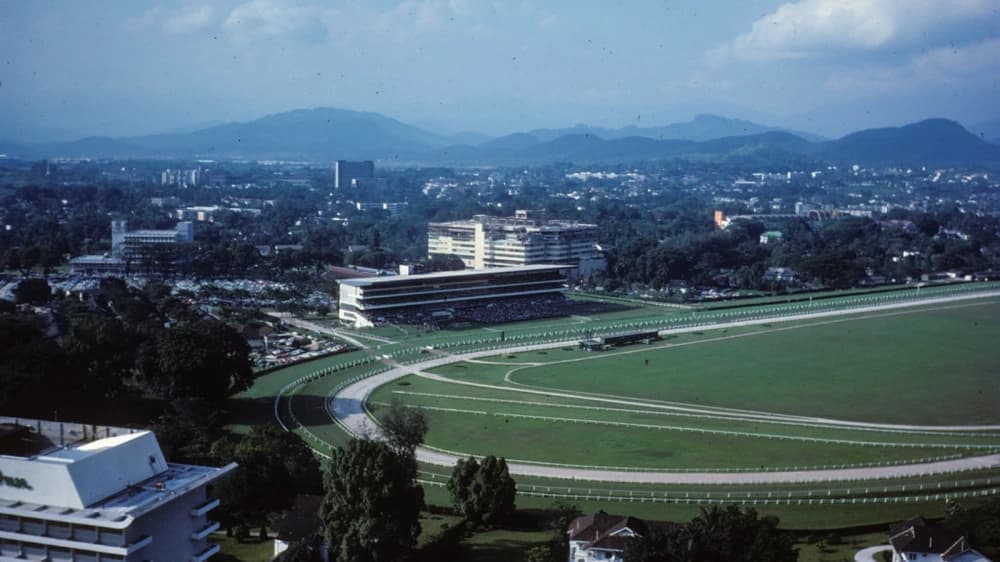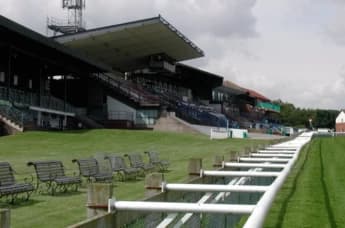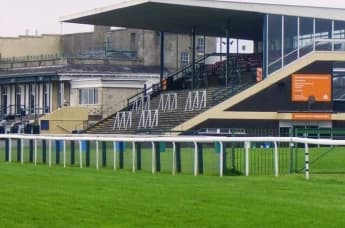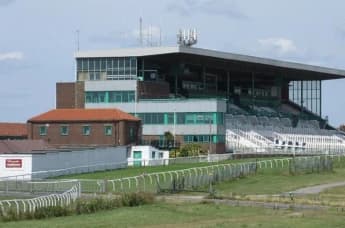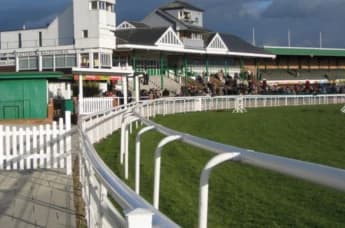From its historic roots in 1840 to its modern-day prominence, the Albury Racing Club continues to be a cornerstone of Australian country racing, blending tradition with innovation to create unforgettable experiences.
Overview
The Albury Racing Club, established in 1881, is a celebrated institution in Australian horse racing, renowned for its rich history, vibrant events, and deep community ties. Located in Albury, New South Wales, the club has evolved from its humble beginnings into a premier destination for thoroughbred racing and social gatherings. With a legacy spanning over 180 years, the Albury Racing Club has become synonymous with excellence, resilience, and a passion for the sport.
The club’s origins trace back to 1840, when the first recorded horse racing meeting was held at Browns Paddock. The 1845 Albury Cup, believed to be the first cup trophy awarded in Australian horse racing, marks the early significance of the sport in the region. The Albury Racing Club, formally established in 1881, has since grown into a cornerstone of the local community, hosting iconic events like the Commercial Club Albury Gold Cup Carnival, which draws thousands of spectators annually.
Beyond racing, the club has become a versatile venue for weddings, corporate events, and community gatherings, offering state-of-the-art facilities and a picturesque setting. With a commitment to sustainability, innovation, and community engagement, the Albury Racing Club continues to uphold its legacy while embracing the future.
Historical Background
Founding Era: 1840–1900
The Albury Racing Club’s roots lie in the mid-19th century, when horse racing emerged as a popular pastime in the region. The first recorded race meeting took place in 1840 at Browns Paddock, a site that would later become part of the Albury Botanical Gardens. The 1845 Albury Cup, awarded to the winner of a local race, is a testament to the sport’s early prominence.
The Albury Jockey Club, formed in 1855, faced financial difficulties and disbanded in 1865. However, the same year, a 141-acre grant secured the current racecourse site, paving the way for the establishment of the Albury Racing Club in 1881. The inaugural Albury Cup Meeting in 1883, won by the horse Coolabah, marked the beginning of an enduring tradition that continues to this day.
Early Developments: 1900–1950
The early 20th century saw steady progress for the Albury Racing Club, despite challenges such as economic downturns and wartime disruptions. The club focused on improving its facilities, enhancing the track, and expanding spectator amenities. The Albury Cup gained recognition as a major regional event, attracting top trainers, jockeys, and horses.
During World War I and World War II, racing activities were curtailed, but the club’s resilience ensured its survival. Post-war, the club revitalized its operations, introducing new initiatives to attract racegoers and improve the overall experience. By the mid-20th century, the Albury Racing Club had cemented its reputation as a leading regional racing destination.
Significant Transformations: 1950–2000
The latter half of the 20th century marked a period of modernization for the Albury Racing Club. Grandstands were expanded, track conditions were upgraded, and betting services were enhanced to meet growing demand. The introduction of televised races in the 1960s boosted the club’s visibility, attracting a wider audience.
The Albury Gold Cup Carnival emerged as a highlight of the racing calendar, combining high-stakes competition with social festivities. The 1980s and 1990s saw the club embrace commercialization, with sponsorships and corporate partnerships playing a key role in its success. By the turn of the century, the Albury Racing Club had transformed into a well-rounded entertainment venue, blending the charm of country racing with professional-level competition.
Modern Era: 2000–Present
The 21st century has been a period of continued growth and innovation for the Albury Racing Club. The club has embraced digital technologies, offering live streaming, online betting, and social media engagement to enhance the racing experience. Sustainability has become a key focus, with eco-friendly practices integrated into track maintenance and facility upgrades.
The Albury Gold Cup Carnival remains the club’s flagship event, drawing thousands of visitors each year. The 2008 carnival set a record attendance of 20,117 spectators, underscoring its popularity. Recent years have seen the club invest in modernizing its infrastructure, expanding hospitality offerings, and strengthening community ties.
Track Characteristics
The Albury Racecourse is renowned for its meticulously maintained turf track, which provides a fair and competitive racing surface. Measuring approximately 2100 meters in circumference, the track features sweeping turns and a 400-meter home straight, offering an ideal balance of speed and endurance.
The track’s well-proportioned turns allow horses to maintain momentum, while the long straight provides ample space for thrilling finishes. Barrier positions play a crucial role in race outcomes, with inside draws often advantageous in shorter sprints. The track’s consistent quality and strategic layout make it a favorite among trainers, jockeys, and racing enthusiasts.
Notable Races and Events
Albury Gold Cup
The Albury Gold Cup, held annually in March, is the club’s premier event. This two-day carnival combines high-stakes racing with social festivities, including fashion shows, live music, and gourmet dining. The 2008 carnival set a record attendance, highlighting its status as one of Australia’s premier country racing events.
Historic Showdowns: 1938 Interstate Grand Prix
In addition to horse racing, the Albury Racing Club has hosted significant motorsport events, including the 1938 Interstate Grand Prix. Won by Jack Phillips in a Ford V8 Special, the race showcased the versatility of the racecourse and its role in Australian motorsport history.
Annual Festivals: Albury Racing Carnival
The Albury Racing Carnival is a celebration of regional racing culture, featuring a series of races, live entertainment, and community activities. Events like “Fashions on the Field” add a touch of glamour, while local vendors and charity initiatives highlight the club’s commitment to the community.
Facilities and Amenities
The Albury Racing Club offers a range of modern facilities designed to enhance the race day experience. The grandstand provides panoramic views of the track, while the stables ensure optimal care for the horses. On-site dining options, bars, and picnic areas cater to diverse preferences, making the venue suitable for families, corporate events, and casual visitors.
The club’s commitment to accessibility is evident in its ramps, elevators, and clear signage, ensuring a seamless experience for all guests. Premium hospitality packages, including private suites and trackside dining, offer an exclusive setting for special occasions.
The Atmosphere and Experience
Race days at the Albury Racing Club are a sensory delight, combining the thrill of competition with the warmth of community spirit. The vibrant atmosphere, fueled by the roar of the crowd and the rhythmic clatter of hooves, creates an unforgettable experience.
The Albury Gold Cup Carnival, in particular, transforms the racecourse into a festive hub, with live music, gourmet food, and fashion displays adding to the excitement. The club’s emphasis on hospitality and inclusivity ensures that every visitor, from seasoned racing enthusiasts to first-time attendees, feels welcome.
Future Prospects and Developments
The Albury Racing Club is poised for an exciting future, with plans to expand and modernize its facilities. Upcoming renovations include upgrades to the grandstand, enhanced hospitality offerings, and improvements to the track surface and drainage systems. Sustainability initiatives, such as solar energy systems and water conservation measures, reflect the club’s commitment to environmental responsibility.
The club also aims to diversify its event calendar, introducing new races and themed events to attract fresh audiences. Technological advancements, including a mobile app and livestreaming services, will enhance the digital experience for racegoers.
By balancing tradition with innovation, the Albury Racing Club is set to cement its legacy as one of Australia’s premier regional racing venues.
Conclusion
The Albury Racing Club is more than just a racecourse; it is a historic landmark and a vibrant community hub. With a legacy spanning over 180 years, the club has consistently delivered thrilling racing, unforgettable events, and a warm, welcoming atmosphere. As it looks to the future, the Albury Racing Club remains committed to preserving its rich heritage while embracing innovation and sustainability. Whether you’re a racing enthusiast or a casual visitor, a day at the Albury Racing Club promises an experience like no other.

